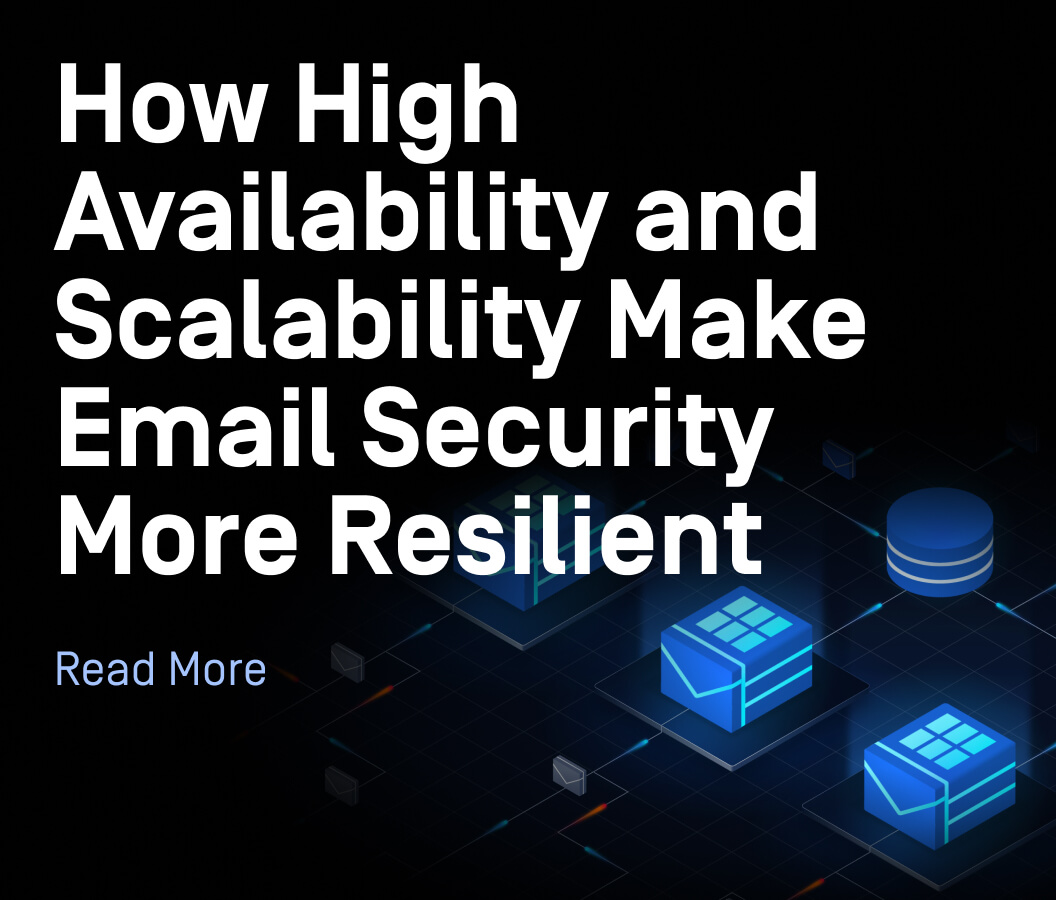Introduction
87% of spear phishing attacks bypass perimeter security. (CISA Analysis Report)
In today's hyperconnected world, email remains a fundamental communication tool for organizations. The widespread use of email as a primary avenue for operational correspondence, marketing, and even internal communications, makes it a preferred target for cybercriminals. When successful, email security breaches can lead to significant financial losses, reputational damage, and legal consequences.
This article explores the most critical aspects to answer the question “What is email security?” for chief information security officers (CISOs) and IT security professionals. We’ll discover actionable insights and strategies to bolster defenses against common and sophisticated email threats.
What is Email Security? (In a nutshell)
Email security encompasses the strategies, tools, and protocols that organizations deploy to secure the access and content of email accounts and messages. It protects against various cyber threats including:
- Phishing & Spear Phishing: Deceptive practices used to steal sensitive information.
- Malware & Ransomware: Malicious software designed to damage or disable systems.
- Business Email Compromise (BEC): A sophisticated scam targeting businesses to siphon funds through email fraud.
The repercussions of these threats are severe, often disrupting business operations and compromising sensitive data.
1. The Critical Need for Advanced Email Security
Email is often the weakest link in security chains, providing an easy inroad to organizational networks. The FBI’s Internet Crime Report notes that losses from BEC alone have cost organizations billions annually.
By penetrating email systems, attackers can gain unauthorized access to a wealth of corporate and personal data, leading to significant operational and financial damage. This necessitates a multi-layered email security approach to safeguard sensitive information effectively.
2. Key Stakeholders in the Email Security Team
The responsibility of email security falls on several key stakeholders within an organization:
- CISOs oversee the strategic direction of cybersecurity efforts, including email security.
- IT Security Managers implement and maintain security measures, ensuring they align with organizational policies.
- Security Analysts monitor systems and respond to breaches or threats.
Moreover, every employee plays a crucial role in maintaining security by adhering to best practices and participating in ongoing training.
3. Areas Most Vulnerable to Email Threats
Email threats can enter through various channels, but certain areas within an organization are more vulnerable, including:
- Human Resources and Finance Departments: These are frequent targets due to their access to sensitive personal and financial information.
- Cloud vs. On-Premises Solutions: Cloud-based email systems offer scalability and remote accessibility but can be vulnerable if not properly secured.
Understanding these vulnerabilities is essential for implementing effective protective measures.
5 Essential Technologies for Advanced Email Security
Several key capabilities are critical for securing email communications now and into the future:

Multiscanning:
Using multiple anti-malware engines in combination drastically improves the detection of zero-day malware and advanced threats while reducing false positives.
Why? A single or few anti-malware engines are easily bypassed by zero-day malware as anti-malware engine outbreak response times vary due to location or market focus.

Deep Content Disarm & Reconstruction (Deep CDR):
What is Credential Harvesting? 4 Ways to Protect Your OrganizationBy deconstructing and reassembling files, this technology detects and neutralizes hidden threats that bypass standard defenses. This process prevents steganography, validates metadata/headers and performs hyperlink analysis
Why? Zero-day and unknown file-based exploits can bypass traditional email security solutions when hidden inside common file types such as Office documents.

Real-Time Anti-phishing:
When Time-of-Click analysis is used for link reputation checks with other online sources, detection is increased. It’s important that this technology can also scan and rewrite QR codes. “Quishing” is a new term describing a tactic employed by threat actors.
Why? Phishing attacks bypass native email security using URL hiding techniques, increasing the risk of social engineering and credential harvesting.

Real-Time Sandbox:
This technology empowers the dynamic detection of malicious behavior inline, resulting in rapid and in-depth analysis. This type of sandbox is 10x faster than traditional sandboxes and focuses on targeted attack detection and IOC extraction.
Why? Unknown malware can bypass signature-based detection and can even remain a threat when analyzed offline.

Proactive Data Loss Prevention:
The capability of automatically redacting sensitive information with a customizable approach can dramatically reduce the intentional or unintentional sharing of confidential business data.
Why? Critical business and personal information can be accidentally sent outside an organization, and regulatory compliance violations can occur. Insider threats can be mitigated more efficiently.
Timely Responses to Email Security Incidents
The ability to quickly detect and respond to email threats significantly reduces potential damage. Organizations should:
- Develop an incident response plan specifically for email-related security breaches.
- Employ real-time monitoring tools to detect threats as they occur.
Prompt and effective responses can mitigate the impact of email security incidents.
Implementing a Comprehensive Email Security Strategy
- Email Risk Assessment & Policy Development: Conduct comprehensive email risk assessments focused on identifying security gaps and potential vulnerabilities. Develop robust policies that address identified risks and ensure compliance with legal and regulatory standards.
- Advanced Protection: Deploy additional defense layers to traditional email security solutions to protect against innovative threats that can bypass native defenses such as those of Microsoft 365. Additional solution technologies should be designed to specifically defend against evolving threats such as advanced phishing, unknown malware, and zero-day exploits.
- Preventive Measures: Implement technical measures like multi-factor authentication and regular software updates. Encrypt sensitive emails and educate employees on secure email practices.
- Detection and Response: Use advanced monitoring tools to detect and respond to threats swiftly. Ensure that your team is equipped to handle incidents effectively.
- Training and Awareness: Regular training sessions for all employees can significantly reduce the risk of breaches. Cultivate a culture of security awareness across all levels of the organization.
- Continuous Improvement: Regularly review and update your email security strategies. Stay informed about the latest threats and advancements in security technologies.
In Summary
CISOs and IT security teams must be vigilant, proactive, and innovative in their approach to protecting their organizations’ email communications. As email is the number one attack vector, it is critical to invest in advanced layers of defense to increase the overall security posture of an organization.

